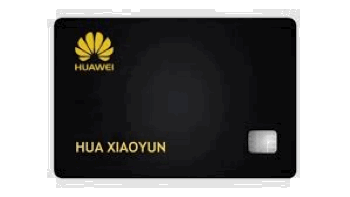- Thierry Spanjaard
Back to cards?
The “Pays” namely Apple Pay, Android Pay, Samsung Pay, and others are slowly expanding at the expense of more traditional payment means. More important, the “Pays” that started with finding their own small place in the payment value chain are regularly making inroads in the payment ecosystem showing they intend to radically transform it, in the mid-term.

A year ago, Apple launched its Apple Card, a credit card initially positioned as a companion card for Apple Pay application. We just witnessed a series of announcements that show once again that imitation is the sincerest form of flattery: Huawei launches the Huawei Card in China while Google is said to be working on a Google Card in the US.

Backed by China UnionPay, the Huawei Card is both a physical and a digital card. The physical version supports contactless payments besides regular contact interface and its transactions will be processed along China UnionPay rails. Just like the Apple Card, there is no PAN or expiry date printed on the card, these data are only accessible by terminals during a transaction and securely kept within the Huawei Pay app. The dematerialized card appears in Huawei Pay app and supports NFC as well as QR-codes.
The Chinese payment market is already crowded: more than 8 billion bank cards are in circulation and total payment value is estimated at US$ 27 trillion (EUR 25 trillion), according to GSMArena. In addition, many payments are not triggered by cards but within the Alipay and WeChat Pay apps.

In the US, the Google Card, as reported by TechCrunch, will allow users to buy things with a card, mobile phone or online, in relation with the Google Pay app and a checking account. The dual-interface card is to be issued by bank partners, including Citi or Stanford Federal Credit Union. So far, Google Pay only allows online and peer-to-peer payments, while a Google Card would open the world of physical commerce to cardholders, while keeping the advantages of the Google Pay app, that could provide additional control on card security.
Privacy experts are already concerned by the link that could be established by Google between users, their purchase patterns and payment data, that they could use to sell even more targeted advertising services and create a competition distortion with other payment stakeholders.
Samsung plays in a totally different league: as a chaebol, the Samsung group has been including “Samsung Card,” South Korea largest credit card company already for decades. However, no link seems to have been set between Samsung Pay and Samsung Card financial services in Korea.
As anticipated by the financial services industry from the first announcements of the “Pay” apps a few years ago, Apple, Google, Huawei and potentially a few others are expanding along the payment value chain. For the time being, they have found their place in the existing ecosystem, but, at the same time they are expanding to offer always more services. So far, they rely on traditional issuers, acquirers, processors and payment schemes, but nothing will stop them from progressively sidelining the current players, especially in areas in the value chain that are seen as either directly profitable or as bringing better consumer data.






















